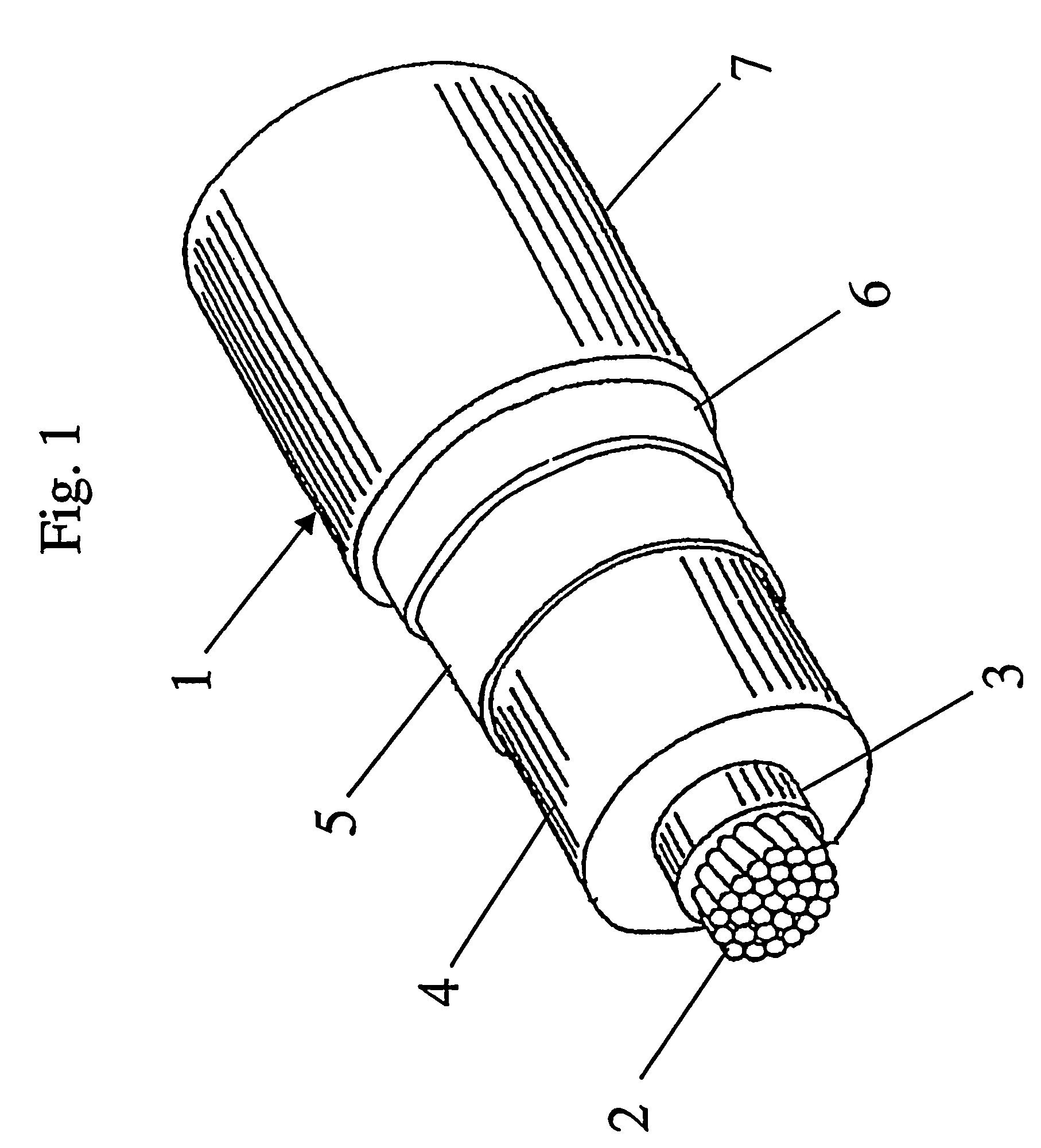Cable with recyclable covering layer
a technology of covering layer and cable, applied in the direction of communication cables, liquid organic insulators, plastic/resin/waxes insulators, etc., can solve the problem of not giving rise to manufacturing problems, and achieve excellent thermomechanical characteristics, high electrical performance, and suitability. flexibility
- Summary
- Abstract
- Description
- Claims
- Application Information
AI Technical Summary
Benefits of technology
Problems solved by technology
Method used
Image
Examples
examples 1 – 5
EXAMPLES 1–5
Compositions Preparation
[0105]The following components were used:[0106]a propylene heterophase copolymer with melting point 165° C., melting enthalpy 30 J / g, MFI 0.8 dg / min and flexural modulus 150 MPa (Adflex® Q 200 F—commercial product of Basell);[0107]a propylene heterophase copolymer with melting point 142° C., melting enthalpy 25 J / g, MFI 0.6 dg / min and flexural modulus of 85 MPa (Hifax® CA 10A—commercial product of Basell);[0108]Sunpar® 2280 (commercial product of Sunoco): paraffinic oil with viscosity of 475 cSt at 40° C., pour point of −15° C. and ratio of number of aromatic carbon atoms with respect to the total number of carbon atoms of 0.02, consisting of 69% wt paraffinic carbon atoms, 29 wt % naphthenic carbon atoms, 2 wt % aromatic carbon atoms and 1.5 wt % polar compounds;[0109]Nyflex®820 (commercial product of Nynas): naphthenic oil with viscosity of 110 cSt at 40° C., pour point of −27° C. and ratio of number of aromatic carbon atoms with respect to the ...
example 1
[0126]94% by weight Adflex® Q 200 F+6% by weight Sunpar® 2280;
example 2
[0127]94% by weight Adflex® Q 200 F+6% by weight Nyflex® 820;
PUM
| Property | Measurement | Unit |
|---|---|---|
| melting enthalpy | aaaaa | aaaaa |
| melting point | aaaaa | aaaaa |
| pour point | aaaaa | aaaaa |
Abstract
Description
Claims
Application Information
 Login to View More
Login to View More - R&D
- Intellectual Property
- Life Sciences
- Materials
- Tech Scout
- Unparalleled Data Quality
- Higher Quality Content
- 60% Fewer Hallucinations
Browse by: Latest US Patents, China's latest patents, Technical Efficacy Thesaurus, Application Domain, Technology Topic, Popular Technical Reports.
© 2025 PatSnap. All rights reserved.Legal|Privacy policy|Modern Slavery Act Transparency Statement|Sitemap|About US| Contact US: help@patsnap.com


